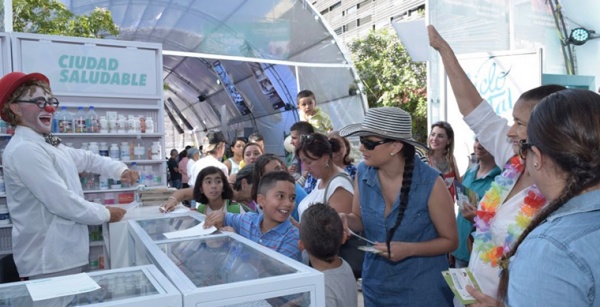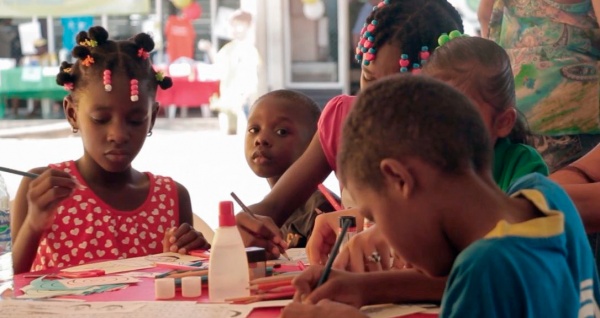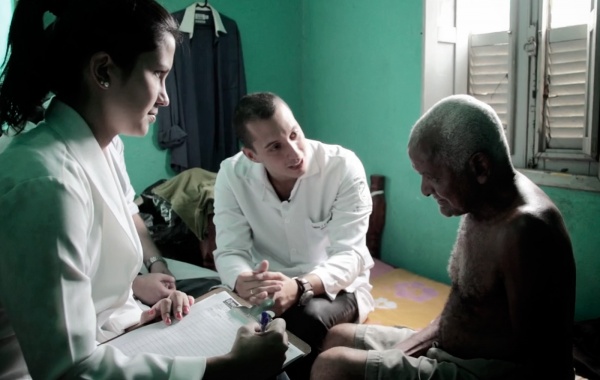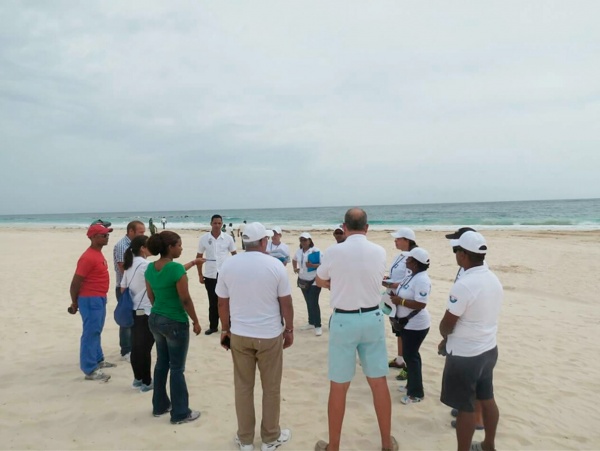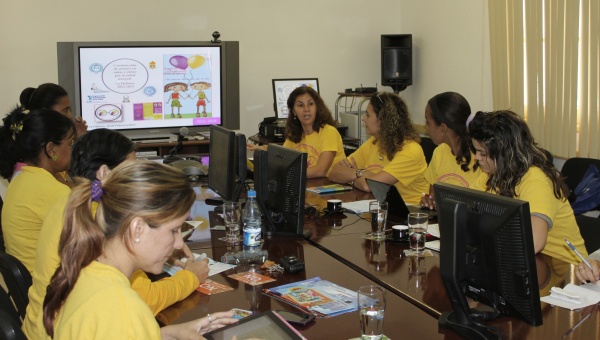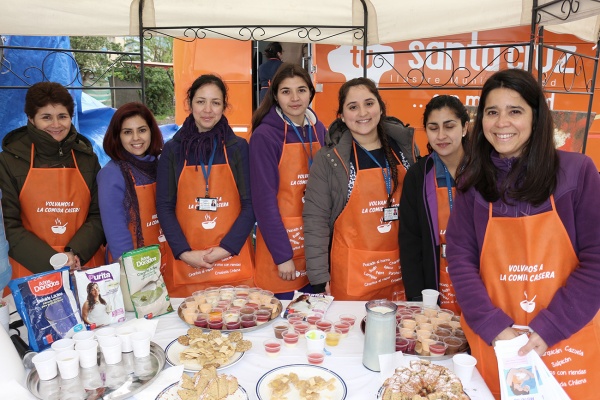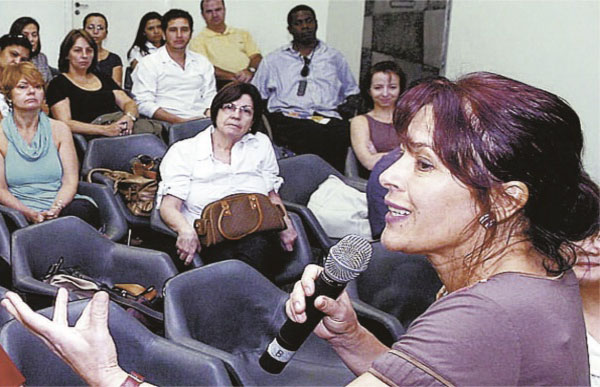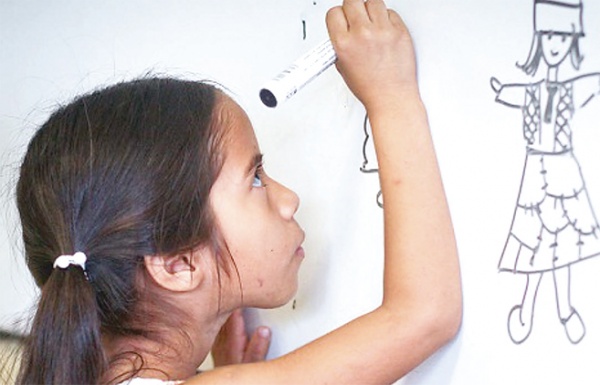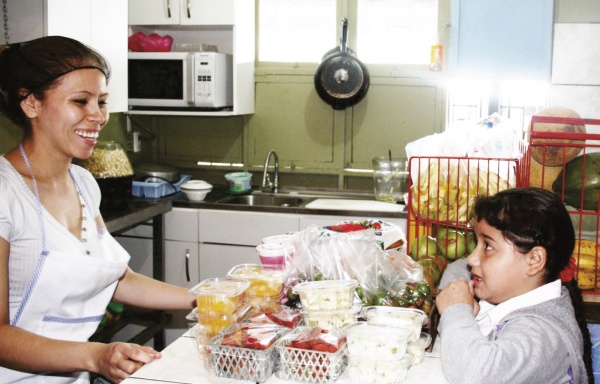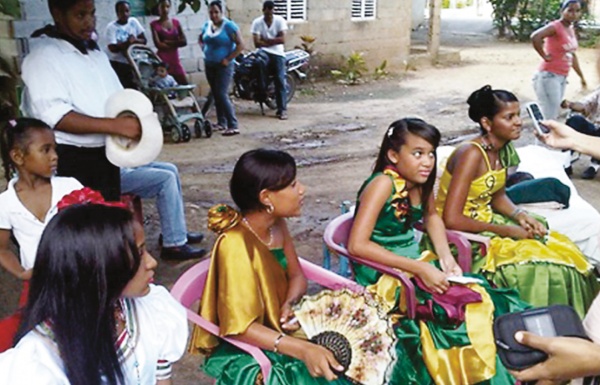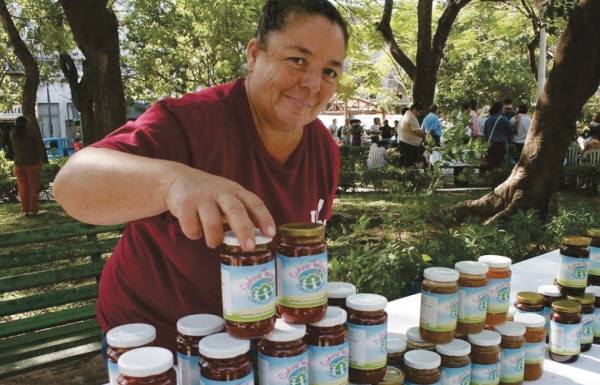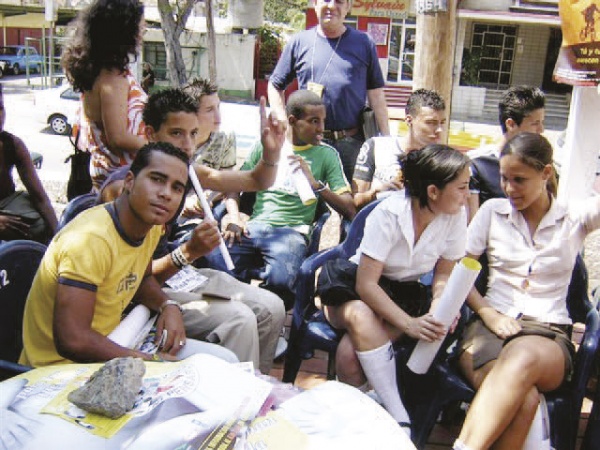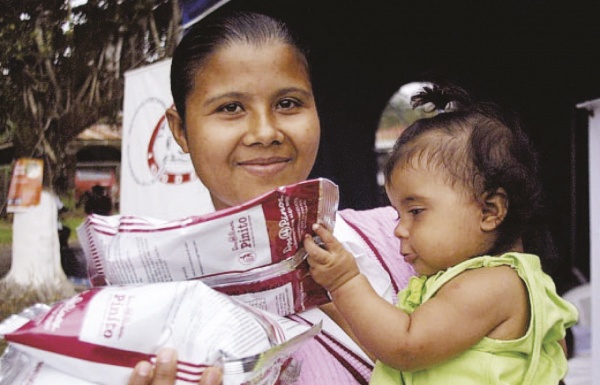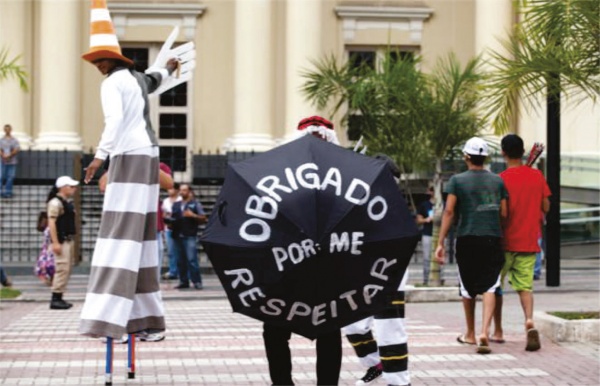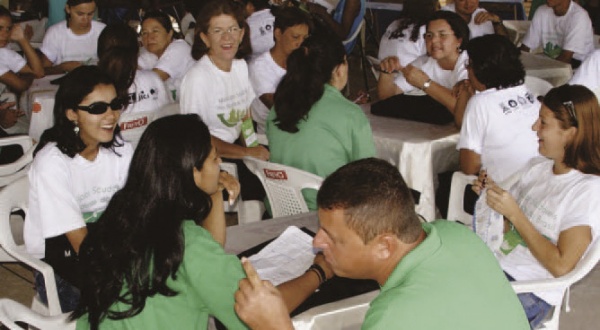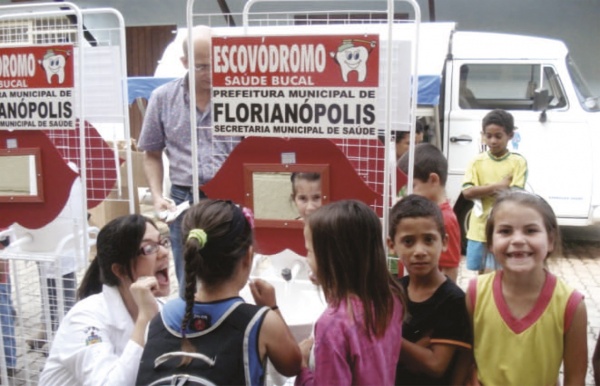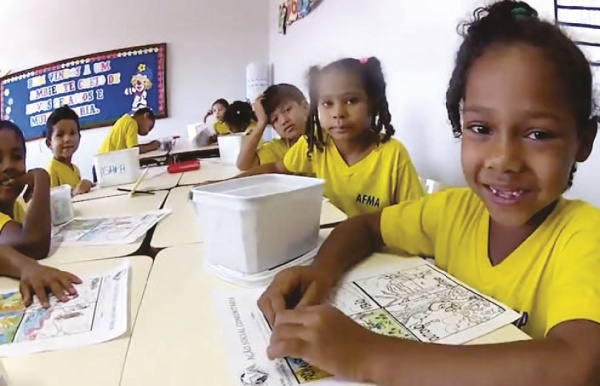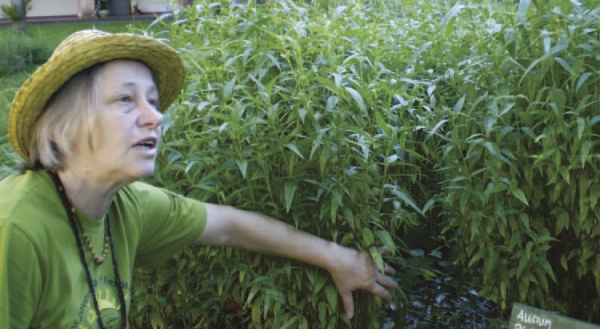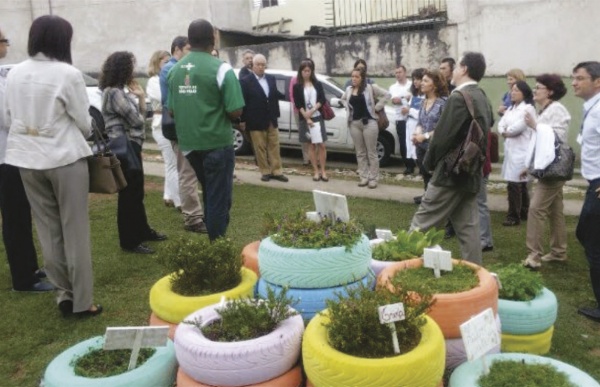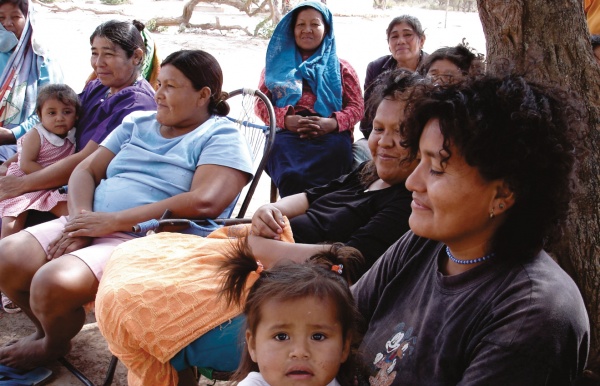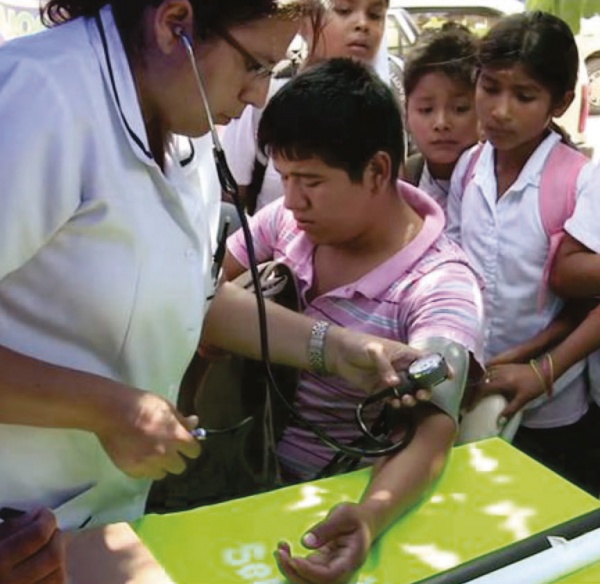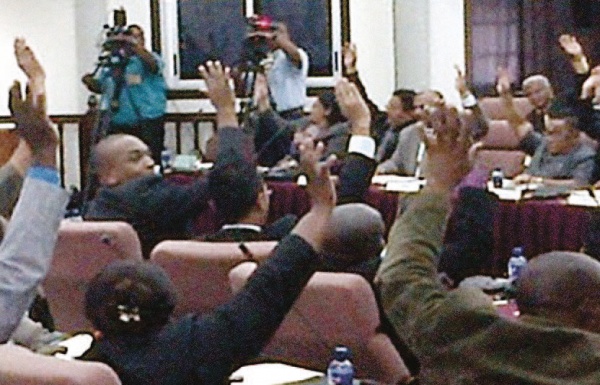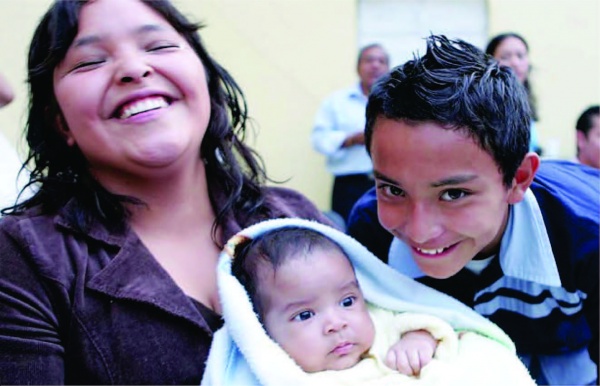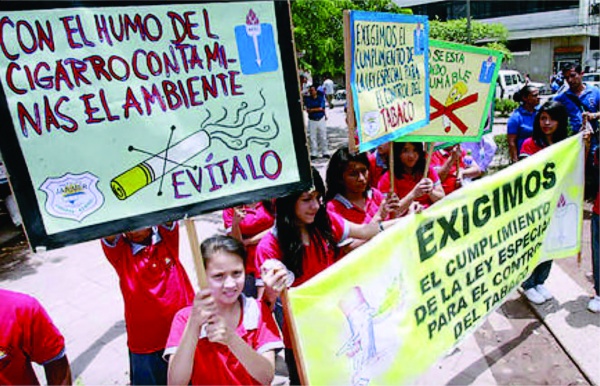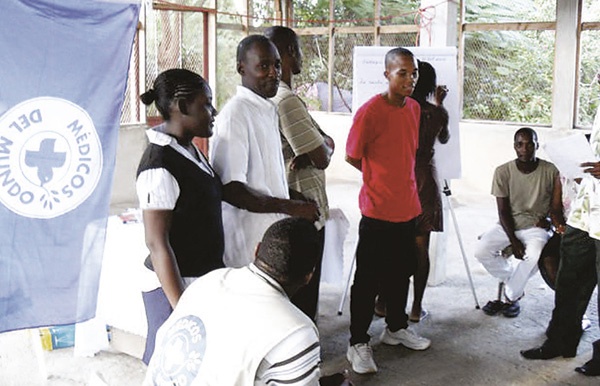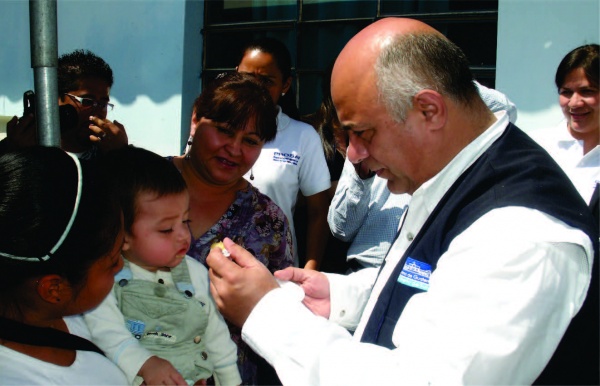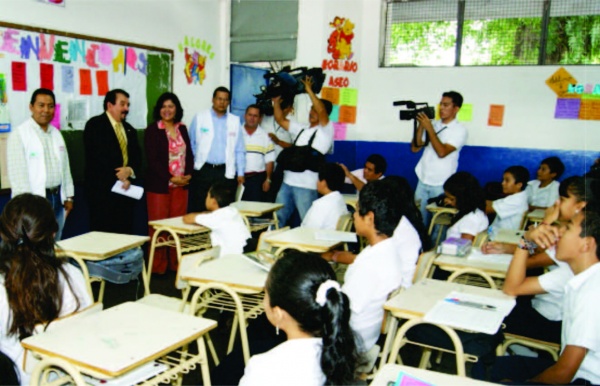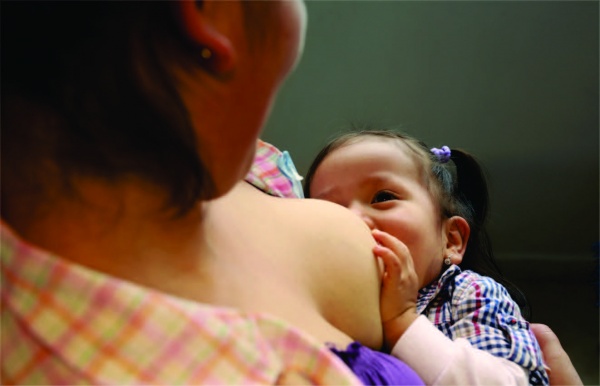Medellin: A Healthy City for living
In 2012, Medellin set out to transform itself into a healthy city. It assessed its past, reevaluating the achievements and developments of previous administrations. It studied its present, joining efforts with the University of Antioquia, assessing the challenges and possibilities of a healthy model for the city. And the city began to build its vision by joining citizens, their organizations and the private sector. These efforts have allowed that in the recent four years the city has invested its resources and efforts to improve its surroundings where people can either gain or lose health by acting on key determinants such as the environment, employment, education, housing and poverty. Since then the Ministry of Health not only runs the programs it is responsible for, it also coordinates and supports all of the health generating structure of the city.
Health in All Policies approach: Quick Assessment of Health Inequities
After hosting the sub-region first Health in All Policies (HiAP) training, the government of Suriname requested support from PAHO and immediately moved towards implementation of the HiAP approach for addressing the social determinants of health. A dedicated team has worked under the leadership of the Ministry of Health on the sub-region first Quick Assessment of Social Determinants of Health to understand the underlying causes of major health problems and associated health inequities. This participatory and intersectoral process lasting six months has left Suriname organized and motivated, with 8 areas of specific action. These will make sure that the responsibility of the health of the population is not only a matter for the Ministry of health, but shared with other sectors, including eight Ministries working closely with non -governmental and community organizations, the private sector, academia and the entire civil society. The experience started in 2015.
Rio 2016: Primary Health Care as a legacy
In 2008 Rio de Janeiro received two important and contrasting news: it was selected as the host of the Olympic Games in 2016 and it appeared as the Brazilian city with the worst health indicators. The Municipal Government decided to link the two facts and intends to organize the Olympics where the main legacy that is left for its citizenship is a reform of Primary Health Care (APS) that benefits the development of competition as well as improving and dignifying life for the citizens of Rio. They have gone from coverage in APS of 150 thousand people in 2008, to 2.5 million people in 2012 , nearly 40 % of its target population. An example of an international sports event that was used as a motivation to produce results in Health with an equity approach.
National Commission of Health and Tourism CONSATUR
The CONSATUR experience in the Dominican Republic was born in 1998 motivated by the need to bring together two engines of national development: Tourism and Health of its inhabitants and of those who visit. They have gradually been shifting from specific coordination actions to consolidate a space of alliance seeking a common goal: to create favorable conditions for health of people and to foster tourism as an important economic activity. It is a good example of practices previous to the HiAP initiative, since back then it was incorporating already many of its criteria.
Glasses to perceive gender roles: Play and teach Health in School
In some schools in Havana, there are boys and girls who have classes that do not seem like classes, because there is no one dictating things but the narrative comes from the children experiencing and starring in them. In their classrooms children learn to use the" gender glasses" which help them to understand how they learn to be men or women, to play these roles, and how they can decide what to keep, discard or transform from that social inheritance. This program was initiated at the National School of Public Health in Cuba, which involves different disciplines and sectors, and includes faculty and families. This is the story of an action research project focusing on the Social Determinants of Health.
Healthy Municipalities, Cities, and Communities strategy
In 2013 the Chilean Ministry of Health studied the experiences developed since 1998 with the Communal Plans for Health Promotion. The careful review of the evidence gave rise to the Healthy Municipalities, Cities, and Communities strategy. New focus was put on the municipalities that are leading on the territorial participatory assessments, with strategic plans for the next three years and that are strengthening the ability of its people to understand and act on their context. This allows finding solutions to territorial problems using local resources and capabilities, strengthening intersectorial action and at the national level. The local - community - national dialogue is one of the strengths of the strategy, because the policies, actions, and decisions are not going in different directions, but are in constant dialogue with each other.
Joint-effort to give care for people living in violent situations
A joint-effort between those responsible for preventing sexual and domestic violence and those caring for their victims was key for the work done in Campinas, in the state of Sao Paulo, Brazil . The coordination was made possible when domestic violence was considered a public health issue, not only a concern for the police force. Today the care for victims is quick and protective; education on this topic increases awareness by teaching people how to identify cases of violence, and to aid in the prevention and reporting of cases when they occur.
Social prevention of violence and crime
The law of Social Prevention of Violence and Crime was issued by the State of Chihuahua, Mexico in 2010. It is an example of intersectoral cooperation implemented at a regional level. The most important aspect of this case is that the State System of Public Safety took leadership and handles criminal situations from a public health perspective, going beyond the criminal approach.
Regulating food sales at school
When classes end, the children in Costa Rica go to school stores to buy food. The Ministries of Health and Education saw the daily need for food and drinks as an opportunity to promote healthy eating habits and proposed regulating which products are sold in school stores. In the midst of a national debate led by the food industry, the decree was finally passed. The importance of health was proven to be more important than the economic interests of corporations.
Human sustainable development in Boca de Mao
The experience of Boca de Mao in the Dominican Republic is a local example that shows how the Health In All Policies (HiAP) approach may be present at a smaller scale. It showcases the level of coordination between a strong community organization that presents and manages its demands, and a holistic and coordinated response from various government sectors. The experience focuses its efforts on raising awareness through education and moving towards concrete actions on issues that concern the environment, food safety, health monitoring and nutrition.
Planal: A National Sovereignty, Food Safety And Nutrition Plan
PLANAL is an experience in Paraguay where a government and its citizens work together to respond with holisticpolicies and actions to fight the main causes of food insecurity. It is a global governance strategy to improve the efficiency of State action. In this case a strong intersectoral coordination seeks to overcome the fragmented efforts and reverse the unequal distribution of resources.
Anti-Dengue Campaign: Kill it with Thirst
The case study from Uruguay describes the actions taken to control and reduce the prevalence of dengue in the country. This is a case of intersectoral action at the level of information sharing. While it does not meet many of the criteria to be considered a Health in All Policies approach, it is an example of a successful partnership between government institutions and the National Movement of Public and Private Health Users (NMPPHU), a nongovernmental organization that addresses public health issues.
The Cuban Health System
Cuba exemplifies a process of incorporating the focus of health promotion in the national system that was initiated at the time of the Revolution, and adapted to the perspective of the social determinants of health over time. It is a case of inter-sectoral work that has been institutionalized and is reflected in the Constitution, where all relevant actor, including community representatives, are summoned to collaborate on the design, implementation and monitoring of policies and programs.
Cencinai: Education Centers, Nutrition and Holistic Care
A family living in poverty and vulnerability faces the risk of nurturing its children inadequately. A wide inter-sectoral response led by Health and Education was successful in providing this children in Costa Rica with holistic care as well as nutrition and education services. Working mothers are also given the support they need to succeed. This is an example of inter-sectoral coordination in the presence of a social determinant of health.
Life in Traffic: An Intersectoral Strategy
Since the mid 1990s, Belo Horizonte, Brazil, presented a persistent increase in traffic accidents. In 2010, the Ministry of Health proposed " Life in Traffic ", an intersectoral strategy that developed a Local Action Plan. By having joint collaboration and coordination with other sectors, it coordinated actions in raising awareness through education, outreach, plans and policies. Strong evidence supports the effectiveness of this program.
Pernambuco: A Network of Healthy Municipalities
In Pernambuco , Brazil, they have woven a strong network that involves leaders from the government, university and the community . Everyone collaborates by providing: courses, dissemination, volunteering, and specific plans to make municipalities a healthy experience. Everyone works as a network by meeting, coordinating and acting together. The goal is to develop health equity, social justice, cooperation and the preception of happiness.
Health Program in School
This experience of Florianopolis, Brazil, shows two core development sectors acting in a coordinated manner and with oa focus on Social Determinants of Health. On the one hand, the educational sector, modifying the school curricula to longitudinally address health issues such as drug abuse, violence, culture of peace, and healthy eating, among others. And on the other hand, the health sector, training educators and school communities as health promoters.
PBF: Bolsa Familia Program
Bolsa Familia is a Brazilian government program that originated from the legislative and executive powers. It serves families in extreme poverty by increasing their human capital and improving their development opportunities through cash transfers and by increasing access to public services and food, among other actions. It assumes an intense inter-sectoral coordination and shows good results in child nutrition, lower fertility rates, improved maternal education and a higher purchasing power.
National Policy for Tobacco Control
Since 2003, by presidential decree, Brazil created the National Commission for Implementation of the Convention for Tobacco Control (CONICQ). The Commission comprises 18 areas of government acting together; for example: Finance develops tax policy, and combats the illegal tobacco market; Justice elaborates materials on illicit drugs; Agrarian Development, carries out a national program to promote crop area diversification, among other actions. Different sectors are working together for Health in All Policies (HiAP).
Green and Healthy Environments Program in Sao Paulo (PAVS)
In Sao Paulo , Brazil, this initiative is born to face the dismantling of policies and build an environmental management with active community participation . It empowers environmental managers who work in coordination with health promotion . They train people , help them identify needs and develop projects in areas such as tree planting, water, solid waste, healthy food, and the revitalization of public spaces, among other projects. It is an example of intersectoral strength and community participation.
Health Promotion Through Community Radio AMORB / FM
In Porto Alegre , Brazil, an example of intersectoral information exchange has been launched through a community radio microphone. The radio program " In the Radio Waves " talks and raises awareness about health and its promotion . Speakers have a dialogue with the audience on how to empower themselves to achieve a better quality of life and to learn about disease prevention. This is a case study of community organization, in collaboration with different institutions.
Faces, Voices and Places in the Bolivian Chaco
This experience is an example of local development and health in the communities of the Guarani in the Bolivian Chacoregion. The program approaches reality with a focus on the social determinants of health . It focuses on the coordination of national, subnational and local levels, as a strategy to improve the health of vulnerable people. The results are positive as the program manages to aid this specific population with its particular challenges and opportunities.
Life Points
In Bolivia , a Life Point is a mobile tent located in a public place . Anyone can come and learn to prevent the risks of contracting non communicable diseases . The program began in La Paz and has spread to all nine departments of Bolivia . The initiative was started by a civic organization that has achieved to mobilize certain government sectors. The long queues in front of the tents speak of the warm reception that citizens have given to the project.
Forging Partnerships for a Tobacco Free Suriname
A law that seeks a tobacco-free country, was the result of a hard negotiation process that mobilized the health sector in Suriname. From the beginning this sector knew it could not act alone . It is based on a collaborative effort with contributions from different sectors. It included lobbying with political leaders and the private sector, as well as a creating awareness and mobilizing citizens. The law was passed in 2013 with an absolute majority.
Strategy to Combat Overweight and Obesity
In Mexico, the numbers of overweight and obese people are increasing every year, as well as the diseases associated to these conditions . To meet this challenge, a National Agreement for Healthy Nutrition was proposed. Different sectors promote food regulation, changing the family diet and creating awareness of eating habits, and increasing physical activity. Each sector has a specific agenda that is coordinated with the rest.
Special Act to Regulate Tobacco
The Special Act to Regulate Tobacco in Honduras , has been active since 2011. This act regulates the production, distribution , marketing, import, consumption and advertising of tobacco. It was the result of an intense and intersectoral negotiation process to design it, promote it at the legislative level for its adoption as a policy, and subsequent coordination to familiarize citizens with it.
Health Promotion by Fighting Cholera
The Haitian Ministry of Health spearheaded the Strategy to Promote Health and Quality of Life in the Fight against Cholera in Haiti with support from the international community. This program grew out of the destruction and health challenges caused by the 2010 earthquake that devastated the island. An example of intersectoral action at the information sharing and cooperation levels, this strategy provides education and training to promote public awareness and community participation and empowerment to control the epidemic.
The Zero Hunger Pact and its Implementation in Tajumulco
The Zero Hunger Pact in Guatemala and its implementation in the municipality of Tajamulco, is a good example of how a national policy can be adopted and implemented locally through intersectoral cooperation. The Pact intervenes in the social determinants that generate malnutrition and inequality, improving access to food and nutrition of children in the municipalities and most vulnerable populations .
Intersectoral Health Commision (CISALUD)
The Intersectoral Health Commission of El Salvador is a space for horizontal dialogue where different sectors define health priorities. The sectors make recommendations and each focuses its decisions and resources to develop actions that affect the Social Determinants of Health and promote health equity.
National Plan for Good Living (PNBV)
Ecuador established the National Plan for Good Living as a way to plan and generate actions. The Plan permeated the entire state structure, integrating Health, Education, Labor and Social Inclusion sectors , among others. It created opportunities for citizen participation, from the national to the local level with a focus on rights. The plan has its own resources and it has Presidential and legislative support. It is a clear example of intersectoral action to build sustainable development.
